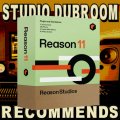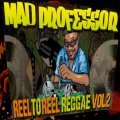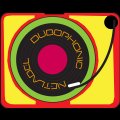| We
have our sequencer running in a two-bar
loop, and connected the instruments we need.
For this tutorial, we'll use Propellerhead
Reason as our sequencer of choice. The
program is much more than just a sequencer,
but that doesn't matter for now.
Reggae Music has a foundation of drum and
bass. You could say, that when the drum and
bass play the right lines, you could
basically put anything on top of it. So it
is obvious, that the drum and bass need our
first attention.
Make sure you have the "Piano
Roll" or "Pianola Roll"
window active. Your sequencer has one.
First, we decide a BPM and whether we
want our riddim to be in straight or in
triplets or "swing".
Let's make a riddim in the Rub a Dub
style. We put our sequencer on 140 BPM and
will use a straight rhythm.
Put any quantize function to 16/16, not
8T or triplets. You will see that you will
have 16 different points in a bar, where you
can put some thing.
Ready?
Let's start with the Hi Hat. Put one
closed Hi Hat note on the very first count,
and one on the half-count next to it. You
should hear two closed Hi Hat hits now...
Now make sure that you reduce the
velocity of the second Hi Hat hit. Velocity
is the "volume" of the midi note.
Select the two hi hat hits and copy them
to the second count. Do this until the two
measures are completely filled. Now change
the very last Hi Hat hit from closed to
open. Change the velocity if you like.
You should hear something like the
following audio example:
EXAMPLE0012.MP3
Now put a snare drum hit on the third
count of both measures. And put a
kickdrum/bassdrum on every first count. Also
put a bassdrum hit on the half count before
the second measure, and on the 4th count.
Take a look at the following scheme:
|
|
|
PIANO(LA)
ROLL
|
|
1
|
- |
2 |
- |
3 |
- |
4 |
- |
1
|
- |
2 |
- |
3 |
- |
4 |
- |
|
X
|
x |
X |
x |
X |
x |
X |
x |
X
|
x |
X |
x |
X |
x |
X |
x |
|
|
|
|
|
X |
|
|
|
|
|
|
|
X |
|
|
|
|
X
|
|
|
|
X |
|
|
x |
X
|
|
|
|
X |
|
x |
|
|
|
You should hear something like the
following audio example:
EXAMPLE0012.MP3
Congratulations! You've created your
first drum rhythm! That is to say, the basic
rhythm.
But before we pay more attention to the
drums, we'll fill in some other instruments.
|

























